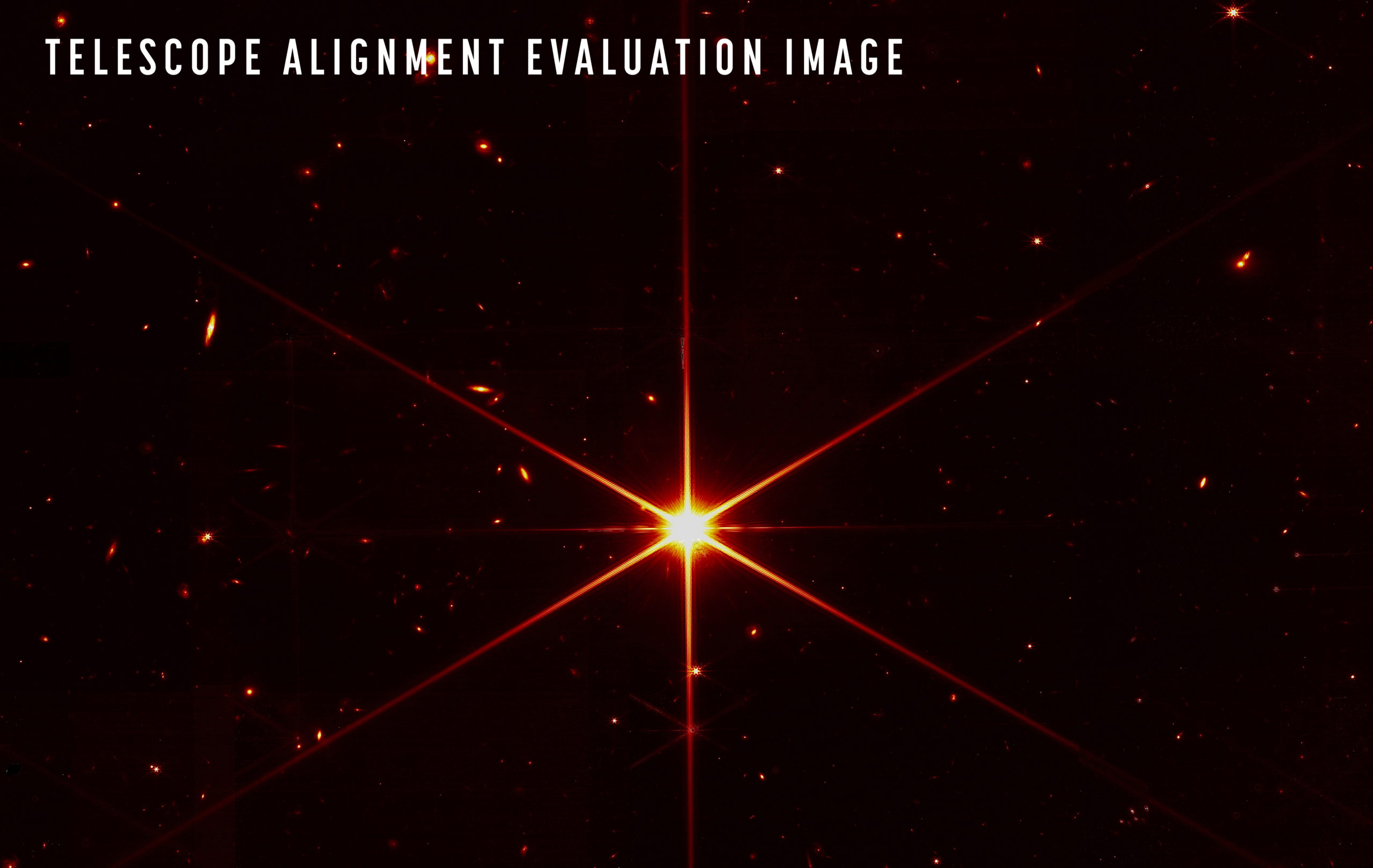
JWST alignment image released on March 16, 2022 by NASA. The non-descript 10.7 magnitude alignment star, 2MASS J17554042+6551277 (an evolved star selected from the 2 Micron All Sky Survey Infrared catalog), is approximately 2,000 (1,987) light years distant in the constellation Draco, the celestial dragon. The star with the 6 diffraction spikes, an artifact of the hexagonal symmetry of the telescope’s optics, although visually striking, isn’t what’s interesting. The background galaxies provide a far-more meaningful context and a hint of what’s to come as the telescope begins science operations in June of this year.
The recently launched James Webb Space Telescope (December 25th, Christmas Day, 2021) has produced what should be the first of many thousands of such stunning images. On Wednesday, March 16, NASA released the final test image, an image that could be considered the ‘First Light‘ image for the telescope. The ‘First Light‘ image for any telescope is the first time photons from an astronomical source traverse the light path of a telescope. This usually occurs for a fully-commissioned telescope where the image has some intrinsically useful qualities or data.
The non-descript 10.7 magnitude alignment star, 2MASS J17554042+6551277 (an evolved star selected from the 2 Micron All Sky Survey Infrared catalog), is approximately 2,000 (1,987) light years distant in the constellation Draco, the celestial dragon. The star with the 6 diffraction spikes, an artifact of the hexagonal symmetry of the telescope’s optics, although visually striking, isn’t what’s interesting. The background galaxies provide a far-more meaningful context and a hint of what’s to come as the telescope begins science operations in June of this year. Details of the alignment process can be found here and here.
Background Galaxies and some Astronomical Fun Facts
The test or alignment star is an evolved, 2-solar mass sub-giant star with an absolute magnitude (total energy output) of +1.77 or 16.6 times greater than our sun’s. This is principally due to its increased size as a sub-giant star, an evolutionary point where the star’s principal energy source is helium fusion reactions in its core. It is 1,987 light years distant in the constellation Draco, the celestial dragon. Much of the energy output of such stars, having evolved off the ‘Main Sequence‘, is in the red and Infrared regions of the Electromagnetic Spectrum. Since JWST is principally an Infrared observing platform, it is this property of the star, its peak energy as an evolved star in the red and near-IR, that led to its choice by mission planners as the test and calibration star. Other factors included the test star’s solitary position on the sky, that it was far enough from other stars such that there was little to no interference from other sources.
Although visually striking, the test star isn’t what’s really interesting in this image. What is noteworthy in this 264 second (4 minute, 24 second) exposure are the various galaxies in the background. Based on size and brightness, a rough estimate would put them between 1 and 3 billion light years distant, a staggering one million times more distant than the test star! The star is a foreground object set against the deep backdrop of cosmologically distant galaxies.




